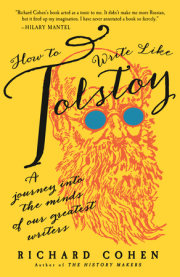Chapter 1How It All BeganThe great authority on early arms, ewart oakeshott, believes that swords first appeared between 1500 and 1100 b.c. in Minoan Crete and Celtic Britain. Remarkably quickly, they became an implement of sport: the oldest known depiction of an actual fencing match is a relief in the Temple of Madinat Habu, built by Ramses III around 1190 b.c., near Luxor in Upper Egypt. (To its right is an engraving of a pile of trophy penises, hacked from the enemy dead-practice well, the sequence suggests, and this can be your reward.) The men are clearly not dueling-they appear to be wearing masks, padded over the ears and tied to their wigs, and the tips of their weapons have been covered. There are judges on either side holding feathered wands, and the score is being kept on a piece of papyrus. An inscription records one contestant as saying, "On guard and admire what my valiant hand shall do."
Ninus, king of Assyria, is usually given the credit for the development of swordplay as a formalized sport. He was also the first to use professional fencing masters to instruct his troops. The Chinese, Japanese, Persians, Babylonians, and Romans sometimes fenced as a pastime, but mainly they used swords to train for combat. Indian tradition has it that Brahma taught his devotees martial exercises with the sword (priests were warriors then), and in Hindu India's great epic, the Mahabharata, we read:
Brightly gleaming their lightning rapiers as they ranged the listed field.
Brave and fierce is their action and their movements quick and light.
Skilled and true the thrust and parry of their weapons flaming bright.This ten-thousand-verse narrative, reputedly written by one Vyasa around 500 b.c., makes frequent mention of swordfights and fencing skills and is one of the first works to examine two basic aspects of swordsmanship: forocity and chivalry.
The Greeks believed that there was no special art to handling a sword. One reason for this was that their weapons of choice were generally short, double-edged with hilts or crossbars, and ridged from point to hilt (to stiffen the blades)-basically hacking implements. A warrior would employ it for close combat only after his spear had been thrown or broken: it was the instrument of last resort.
The Greeks placed critical importance upon drilling men to maneuver in formation, little to teaching hand-to-hand combat. It may have required special skill to throw a javelin, but with a sword it was impossible to miss at close quarters. The Greek historian and soldier Xenophon is dismissive in his account of how the Persians trained their forces. As he saw it, skill with edged weapons came to man as naturally as breathing:
I myself from my earliest childhood knew how to throw up a guard before the things that I thought were going to hit me. If I had nothing else, I would hold my hands before me and hinder the man who hit me as far as possible. I did this not because I was taught to do it; indeed, I was even hit just for throwing my hands before me. As for knives, from the time I was a baby I grabbed them whenever I saw them, and I never learned from anybody how to hold them either, except from nature, as I say. . . . I promise you, I cut with my knife everything that I could without being noticed. It not only came by nature, like walking and running, but seemed to me to be pleasant as well as natural. Well then, since we are left with a sort of fighting that calls for courage rather than skill, why should not we fight with enthusiasm?
Despite this debatable view, it is possible to find, as early as the fifth century b.c., references in Greek historical accounts to oplomachia (literally, "fighting in armor"). Hoplites were the senior Greek infantry, men of substance who could afford armor, unlike the light infantrymen (peltastai) and shield carriers (oplontes), who carried slings and light javelins. The hoplites' skills eventually became a regular part of the military training program in Athens. Plato specifies how their practice sessions should be configured:
We will institute conflicts in armor of one against one, and two against two, and so on up to ten against ten. As to what a man ought not to suffer or do, and to what extent, in order to gain the victory-as in wrestling, the masters of the art have laid down what is fair and what is not fair, so in fighting in armor-we ought to call in skilful persons, who shall judge for us and be our assessors in the work of legislation; they shall say who deserves to be victor in combats of this sort, and what he is not to do or have done to him, and in like manner what rule determines who is defeated.Combatants wore a shield, breastplate, helmet, and shin guards and carried both spear and sword. The competition was essentially a test of skill, flexibility, and physical endurance-a formal imitation of genuine warfare. While professional teachers of combat began to be highly paid and to hold prominent positions in the gymnasia, there were no fencing masters per se. Nor is there any account of Greek sword exercises like those of Flavius Vegetius Renatus, who wrote a whole treatise on the training of Roman legionaries. Swordsmanship in itself was not valued, it being generally believed that those who excelled in athletic games, at the Olympics, and elsewhere would naturally distinguish themselves in war. Thus the "art" of armed combat rarely found its way into public festivals, with the possible exception of funeral games.
One means of preparation came in the form of war dances, which were often performed at religious festivals and would imitate the movements and postures of soldiers-waving shields, swerving or ducking to avoid a blow, and manipulating weapons-thrusting first spears, then swords. Spartan youths practiced these dances from an early age. Socrates believed that those who honored the gods most in dances were the best in battle, while Plato, in his Laws, said, likewise, that dancing had combat value. The goal was to develop agility rather than strength, although Greek recruiting policy still emphasized weight and size rather than gymnastic ability: a good big one was worth more than a good little one. Only in cases of monomachy-a tradition in which the commanders of opposing armies met each other in single combat-did any individual duel openly with another.
Unlike the greeks, the romans admired and appreciated swordplay. Horace's friend Sybarus was a fencer, and Ovid, reflecting mournfully from his exile on the shores of the Black Sea, imagined the young men back in Rome practicing their swordplay. Gladiatorial combats-a Roman invention-date from 264 b.c. They began as a flourish occasionally added to aristocratic funeral celebrations: slaves, or sometimes prisoners of war, would fight in honor of the dead. Over the years, the contests, which could run to three hundred bouts, were extended to general celebrations. None other than Julius Caesar drew up special rules for these deadly games; he encouraged them as a means of distracting his otherwise restive people (as well as winning himself political support) and even had his own school in Campania, now recognized as "the cradle of the gladiatorial system."
Can an activity be regarded as a sport when only the spectators see it as such? Gladiators were of course fighting for their lives, but ancient graffiti reveal that they were paid for each performance and could become the popular equivalent of rock stars: images of famous gladiators adorned oil lamps, flasks, and toys, and their exploits were recorded by contemporary chroniclers. Crucial to all this were the lanistae-the indispensable operators who functioned as trainers, slave traders, managers, and impresarios all in one. They bought, rented, or contracted gladiators for combats, set the price for seats, arranged for publicity, and hired musicians. They were generally held in disrepute-lanista also meant "assassin" and "bandit."
Gladiators could be formidable figures: the slave rebellion led by the famous gladiator Spartacus managed to sustain itself against powerful Roman forces for three years, and this is not an isolated example. When gladiators consistently triumphed in the arena itself, it was not uncommon for fathers to pass on the profession to their sons, and there were even families of gladiators. Occasionally, as a novelty act, women fighters appeared-the British Museum has a stone relief of two bare-breasted female performers-although such encounters were seen as exotic spectacles, on a par with dwarfs fighting, and eventually, in a.d. 200, were banned.
Combatants, as a rule, fought in pairs, and a referee (summa rudis), dressed in a voluminous tunic, would normally stand between them, armed with a long stick. There were various kinds of gladiators: the myrmillones and samnites were the most heavily armed, with helmet, shield, protection for their leading leg, and sword-in the beginning a short, wide weapon, later about three feet long and thinner. Thracian gladiators wore helmets and greaves (lower leg guards) and used a dagger. The retiarii fought with a net in one hand and a trident in the other. The juxtaposition of armed and unarmed parts of the body dictated the use of weapons and created the conditions for highly skillful swordsmanship. Left-handed gladiators were reputed to be particularly fearsome, and the style of swordmanship was subject to precise rules for the various gladiatorial categories, which were remarkably uniform across the Roman Empire from the first through the fourth centuries.
All these fighters received their instruction from the lanistae. Trainee gladiators learned the basic movements in groups, using wooden swords covered with leather, with leather buttons on the points. Once in the arena, as a curtain-raiser, they might put on a mass demonstration with training swords, not so different from modern TV wrestling contests. Then the real fighting would begin. "Gladiatorem in arena cepere consilium," wrote Seneca-"The swordfighter reveals himself only when he gets to the arena"-an insight that would ring down the centuries.6
The Roman public was thoroughly familiar with the technical aspects of parrying and thrusting-many would have seen combat themselves. While Romans despised cowardice, they would reward a courageous defeated fighter, even occasionally granting a reprieve from death. There were periods when combat without reprieve was banned altogether: after all, gladiators were expensive to train. The authorities were as vigilant over the health and muscle tone of their fighters as they were over the authenticity of the fights. Ludi (schools) were set up all over Italy to train future performers, and several distinguished surgeons specialized in the treatment of sword and trident wounds.
Over time, free citizens, patricians, and even women frequented the ludi and swordplay became fashionable. No records survive as to whether visitors were limited to watching or were allowed to handle the weapons themselves, although Petronius's novel Satyricon has a woman of senatorial status finding gladiators so interesting that she actually trains as one. We do know that the ancient world never developed sports for their own sake; they played checkers-a game invented, according to legend, to overcome the tedium of the siege of Troy-and various forms of dice. Chess, however, had to wait until the Middle Ages. High society may have practiced swordplay, but that did not make fencing a sport. From an early date attempts were made to legislate against nongladiators' aping gladiators. For members of the upper class to compete in gladiatorial contests was felt to be reprehensible, so much so that when the Emperor Commodus (a.d. 161-192) announced that he would appear as a gladiator in the dress of a consul, he was murdered by his senior entourage before he could do so.
Copyright © 2002 by Richard Cohen. All rights reserved. No part of this excerpt may be reproduced or reprinted without permission in writing from the publisher.






